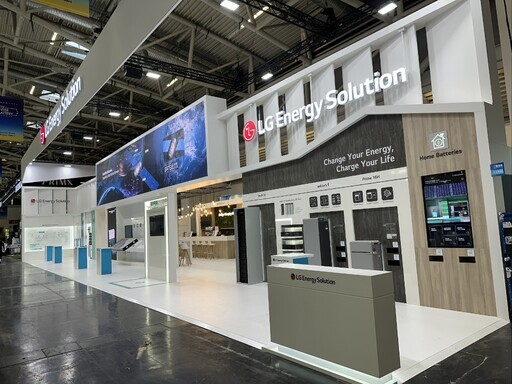


The three major domestic battery companies (LG Energy Solution, Samsung SDI, and SK On) all recorded losses in the fourth quarter of last year. With the policy changes under the second Trump administration and various other uncertainties, the industry is now facing a challenging situation. In the midst of this uncertain external environment, battery companies are planning to focus on strategies for operational efficiency, such as reducing investment and transitioning production lines, throughout this year.
According to industry sources on the 8th, LG Energy Solution reported fourth-quarter revenue of 6.4512 trillion won and an operating loss of 2.255 trillion won. Excluding the 3.773 trillion won subsidy received under the U.S. Inflation Reduction Act (IRA), the actual operating loss amounted to 6.028 trillion won.
Samsung SDI recorded a quarterly loss for the first time in about seven years. In the fourth quarter of last year, the company reported revenue of 3.7545 trillion won and an operating loss of 2.567 trillion won. Excluding subsidies, the actual operating loss amounted to 2.816 trillion won. SK On also recorded a loss in the fourth quarter of last year, with revenue of 6.2666 trillion won and an operating loss of 1.127 trillion won.
Industry experts believe that the decline in electric vehicle battery demand from automakers, coupled with falling battery supply prices, has worsened profitability. With the slow recovery of the industry, the uncertainty surrounding IRA subsidies under the second Trump administration is also growing. As a result, companies are adjusting their investment strategies to respond to the uncertain market environment.
LG Energy Solution has set its capital expenditure (CAPEX) for this year at approximately 10 trillion won, which is about 3 trillion won less than the previous year. This decision comes in response to the long-term stagnation of electric vehicle demand, leading to greater demand volatility, as well as the maximization of idle line utilization, particularly in North America. However, the company is not simply deferring or reducing investments. It plans to continue preparations for launching joint ventures (JVs) with Stellantis and Honda, which are expected to commence operations in the second half of the year, in order to meet customer needs.
Samsung SDI has also taken a cautious stance regarding its investment plans for this year. While it spent 6.6 trillion won on capital expenditures last year, it plans to scale back investments this year. In a conference call in January, Samsung SDI stated, "With uncertainty in forward demand and many companies adjusting their investment plans, we are also re-evaluating our investment strategy based on market conditions. Overall, we are adjusting our investment plans in a more conservative direction, and capital expenditure this year will be lower than the previous year."
SK On plans to reduce its battery facility investment from 7.5 trillion won last year to about 3.5 trillion won this year, cutting the investment by more than half. The operation of the joint venture factory with Ford in the U.S. will also be delayed by one year. The company aims to reassess the optimal timing based on the market conditions.
Additionally, battery companies are exploring ways to export lithium-ion batteries produced in Canada to factories in Europe to avoid the impact of U.S. policies. This strategy is designed to mitigate the potential loss of price competitiveness for domestic companies that have invested in Canada, in the event that the U.S. imposes a 25% tariff on Canadian products.
Europe's favorable stance toward the electric vehicle (EV) industry is one of the key factors driving domestic battery companies to consider Europe as an alternative production base. Since January 30, discussions have been underway in Europe to revive the automotive industry. The key aspects of the policies under discussion include:
▲Carbon dioxide penalty deferral
▲EU-level EV purchase subsidies
The industry anticipates that if both policies are implemented simultaneously, it will have a positive effect on European EV demand. The final policy details are expected to be unveiled on March 5.
An industry insider noted, "As the uncertainty surrounding U.S. policies increases, the developments in the European market will have a significant impact on the battery industry. If electric vehicle incentives are strengthened and regulations are relaxed, companies may carefully consider expanding their production bases in Europe."
ChatGPT를 사용하여 번역한 기사입니다.


 Copyright ⓒ 메트로신문 & metroseoul.co.kr
Copyright ⓒ 메트로신문 & metroseoul.co.kr
Copyright ⓒ Metro. All rights reserved. (주)메트로미디어의 모든 기사 또는 컨텐츠에 대한 무단 전재ㆍ복사ㆍ배포를 금합니다.
주식회사 메트로미디어 · 서울특별시 종로구 자하문로17길 18 ㅣ Tel : 02. 721. 9800 / Fax : 02. 730. 2882
문의메일 : webmaster@metroseoul.co.kr ㅣ 대표이사 · 발행인 · 편집인 : 이장규 ㅣ 신문사업 등록번호 : 서울, 가00206
인터넷신문 등록번호 : 서울, 아02546 ㅣ 등록일 : 2013년 3월 20일 ㅣ 제호 : 메트로신문
사업자등록번호 : 242-88-00131 ISSN : 2635-9219 ㅣ 청소년 보호책임자 및 고충처리인 : 안대성